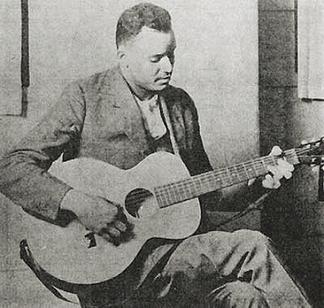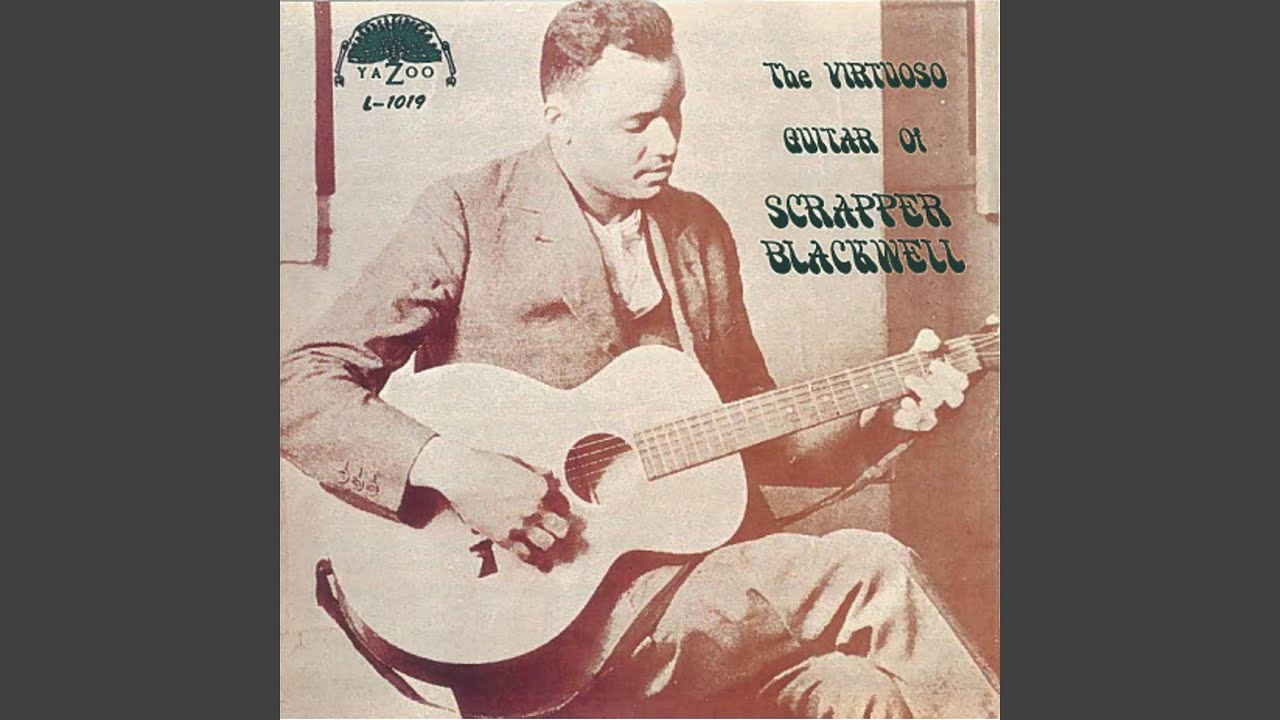Scrapper Blackwell – A Complete Biography
Introduction
Francis Hillman “Scrapper” Blackwell (1903–1962) was a self-taught blues guitarist and singer whose precision single-string picking, urbane phrasing, and partnership with pianist Leroy Carr helped define the transition from rural country blues to a more intimate, city-bred sound between the late 1920s and mid-1930s. His best-known recordings include the duo’s breakout “How Long, How Long Blues” (1928) and his own “Kokomo Blues,” a seed that later helped inspire “Sweet Home Chicago.” After a two-decade hiatus, he returned during the blues revival, only to be murdered in Indianapolis in 1962. In 2024 he was inducted into the Blues Hall of Fame, a long-overdue recognition of his influence.

Childhood
Blackwell was born on February 21, 1903, in Syracuse (an unincorporated community) in Darlington County, South Carolina. One of sixteen children, he moved with his family to Indianapolis around age three. His grandmother nicknamed him “Scrapper,” a nod to a fiery temperament. His father played fiddle, but Blackwell largely taught himself guitar—famously fashioning his first instrument from a cigar box, wood, and wire. He also picked up piano. These formative years in Indianapolis, with exposure to migrating musicians and an emerging Black entertainment scene, shaped the meticulous, lyrical guitar style that later made him a studio favorite.
Youth
By his teens, Blackwell was working part-time as a musician around Indianapolis and traveling as far as Chicago. In the mid-1920s he met Leroy Carr, a soft-voiced pianist and songwriter. Their rapport produced one of the era’s most commercially and artistically successful blues partnerships. In June 1928 the pair recorded for Vocalion in Indianapolis; “How Long, How Long Blues” became the year’s biggest blues hit and set their template: Carr’s pensive, bass-anchored piano and intimate singing framed by Blackwell’s supple, single-note lines.
Adulthood
Between 1928 and 1935, Carr and Blackwell recorded more than a hundred sides, selling well over a million records and helping codify an “urban blues” sound—smaller in scale than the vaudeville stage yet more refined than many country guitar styles. Though often described as reserved and exacting, Blackwell also recorded on his own and with others, and he took occasional trips to Richmond, Indiana, to work at Gennett’s studios. After pushing back about credits and pay, he won equal billing with Carr going forward. Their final session (for Bluebird) in early 1935 ended acrimoniously; two months later, Carr died. Blackwell cut a grieving tribute, “My Old Pal Blues,” then withdrew from professional music, taking various laboring jobs in Indianapolis. Rediscovered in the late 1950s, he recorded again—most notably sessions captured by Duncan Schiedt for 77 Records and Art Rosenbaum for Prestige/Bluesville—which showcased how intact and forward-looking his touch remained.
Major Compositions and Notable Recordings
Blackwell’s legacy rests on both duo and solo work. With Carr he helped craft enduring sides such as “How Long, How Long Blues” (1928), “Prison Bound Blues” (1928), “Mean Mistreater Mama” (1934), and “Blues Before Sunrise” (1934)—performances prized for their conversational interplay and melodic economy. As a solo artist he recorded “Kokomo Blues” (1928), later reworked by Kokomo Arnold and folded into the lineage of “Sweet Home Chicago.” Other fine sides include “Down and Out Blues,” “Trouble Blues,” and “Mr. Scrapper’s Blues.” His late-career recordings for 77 and Prestige/Bluesville confirmed his reputation as a precise, jazz-tinted picker whose lines anticipated postwar electric phrasing.
Death
In October 1962, as new sessions were being planned, Blackwell was found in an alley behind 527 West 17th Street in Indianapolis with a gunshot wound; he died the next day, on October 7, at age 59. The shooting was considered an apparent mugging. He was buried at New Crown Cemetery in Indianapolis.
Conclusion
Scrapper Blackwell’s artistry bridged idioms: born of Piedmont finesse and country directness, honed in a Northern city, and tempered by a partnership that subtly reoriented blues toward the living room and nightspot rather than the dancehall. His single-string clarity, timing, and melodic sense influenced guitarists from Robert Johnson to T-Bone Walker and beyond, even as his name remained less widely known than his impact deserved. The Hall of Fame induction underscored a truth blues musicians had long recognized: the line from early acoustic elegance to modern urban blues runs straight through Blackwell’s guitar.

Comments are closed